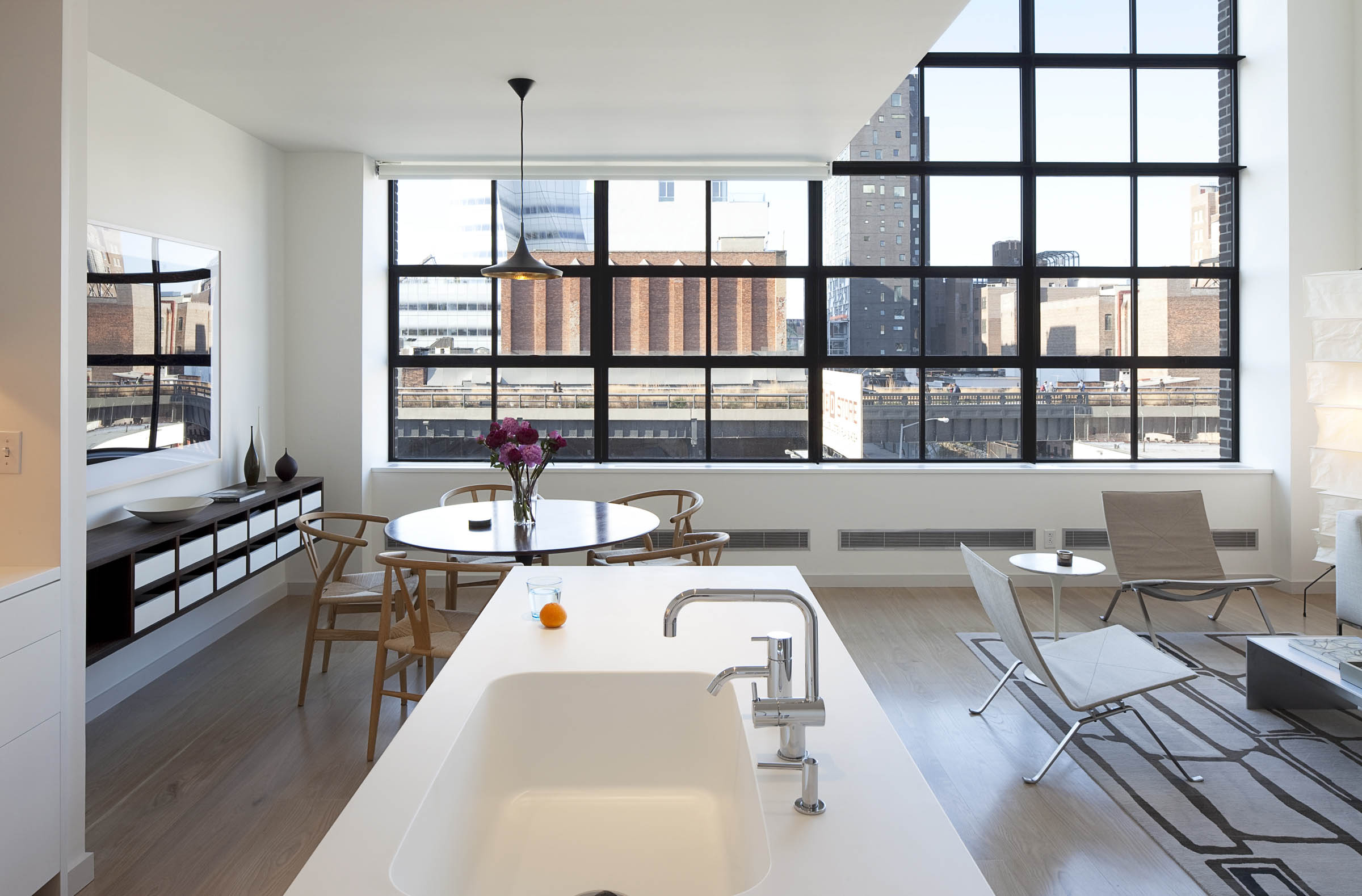Eighteen stories tall, with only ten total residential units, GLASS in Miami Beach responds sensitively to its environment.
Starting with the rise in sea levels.
Living spaces don’t commence until the seventh floor, with the top three floors reserved for the penthouse. At ground level are the lobby, gym and common amenities. Above that are two floors of parking, with a pool and recreation deck atop.
“The housing units are elevated by default and cars are elevated, so they’re off the street as well,” say architect Rene Gonzalez.
He thoughtfully responded to buildings around the new tower too. On one side is the Brown Hotel and on the other is a two-story Art Deco structure, so Gonzalez stepped GLASS back a bit, allowing it to breathe and assimilating the environment into its design.
“The Brown is the oldest hotel on the beach,” he says. “We carried adjacent lines into our building – it become part of the base.”
As the tower climbs skyward, it also disappears, an effect achieved with a fritted glass skin and reflective glass on each unit’s sliding doors. “The important thing here was to find a way for the building to be organized and in tune with the sky constantly,” he says.
At its base, he employed Cochina stone, a material indigenous to South Florida, one full of shell fossils. There’s also blue Macauba stone from Brazil, with a wave pattern in it. “It all captures the feel of the beach and the ocean,” he says.
Completed just a few weeks ago, it was fast tracked for construction in about two years, with support from the city and the community. “The city of Miami Beach is very progressive – they embrace great architecture,” he says. “This is definitely a case where they’re very supportive of this project because of the density and quality architecture.”
Not to mention its respect for context.
[slideshow id=1539]
Photo by Michael Stavaridis/ courtesy Rene Gonzalez Architect

